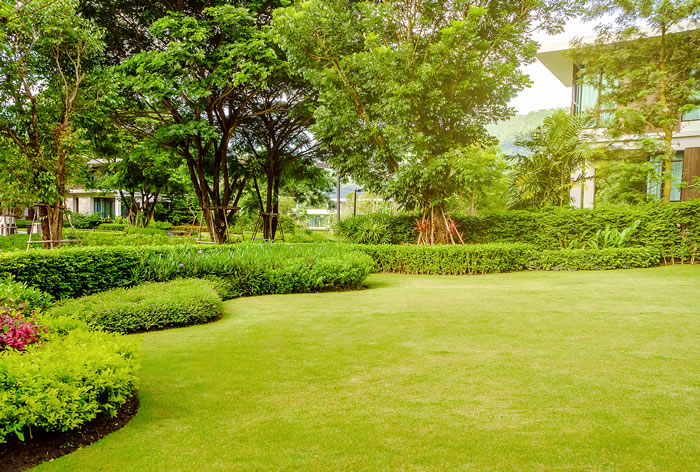
At Southern Star Tree, we get a lot of questions about the best time for planting trees and shrubs. It is a common misconception to think that spring is the best, and even only, time to plant trees and shrubs. Though the generous spring rains provide plenty of water for plants, that rainfall can make soil too wet and drown trees and shrubs before they can mature. Then, you have the hot, dry summer only a couple of months later. Meanwhile, the moderate to cool temperatures of fall are easier on young plants and the fall moisture allows them to firmly establish their root systems. Let’s dive into which season is better for planting trees and shrubs. If you have any questions or if you would like to hire or consult with an ISA-certified arborist, then call Southern Star Tree, your local tree service experts.
It is true that some plants, trees, and shrubs are better off when planted in the springtime. Generally, plants that are slow to establish are best planted in the spring. Yew trees, magnolias, hemlocks, willows, and broadleaved evergreens are some that prefer spring planting. However, trees with shallow, fibrous root systems are better off if planted in the fall. Why? The springtime brings generous rainfall that many people consider to be a blessing. But, too much of anything is a bad thing, especially for newly planted shrubs and trees. Late snow or excessive rainfall can make the soil too wet to plant. This generous rainfall followed by the excruciating heat of the dry summer can make plants suffer. This suffering translates into unhealthy and limited growth if not premature death.
Don’t make the mistake of confusing adult trees and newly planted trees. Some people incorrectly think that, because trees lose their leaves in the fall, newly planted trees would not thrive in this season. To the contrary, planting in the fall has some of the benefits that we value in the spring. Temperatures are cool and this season tends to see sufficient precipitation, allowing plants and leaves to retain their water and establish their roots. Planting in the fall also allows the young tree to take advantage of the spring season just a few months later.
However, if you wait too far into the fall to plant, you run the risk of poor growth and unreadiness for the frigid winter. Maples, buckeyes, ash trees, hawthorns, pines, and other deciduous plants are best planted around six weeks before you expect hard frost. Conifers need an even earlier start than hardwoods as they enjoy the warmer temperatures of the late summer and early fall.
Listen to What the Professionals Say
Every tree species is different, so it would take pages and pages to go over the best planting method and time for each species. However, your trusted tree service and removal professionals at Southern Star Tree are ready to give you tailored assistance. The ISA-certified arborists at Southern Star Tree have years of experience, advanced tools, and tested knowledge. If you would like to listen to what the experts have to say, then call Southern Star Tree to consult with an ISA-certified arborist today.